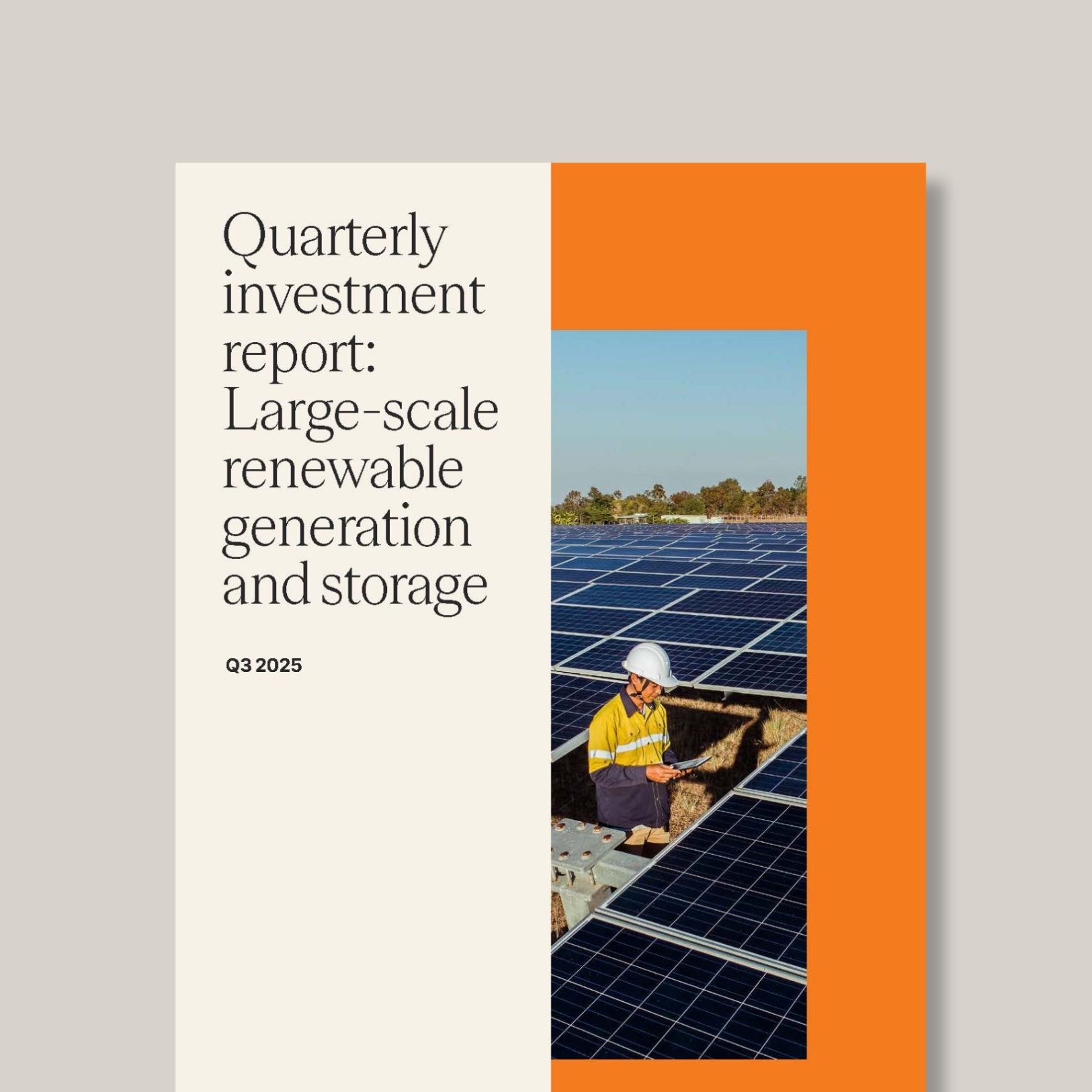In an Australian first, the Clean Energy Council (CEC), together with the Queensland Renewable Energy Council (QREC), have today announced a national approach to renewable energy project decommissioning and financial security, offering farmers greater certainty while maintaining project viability.
The industry model aims to ensure landholders, regional communities and governments are protected in the unlikely event that a project fails to meet its end-of-life obligations. Similar models have been introduced in the resources industry to reduce the incidence of abandoned mines and unfunded rehabilitation.
Under the model to be put forward to governments and communities, financial security is ring-fenced via an approved instrument such as a bank guarantee, cash in escrow, surety bond or other vehicle. Obligations and liabilities transfer with project ownership, maintaining continuity of responsibility throughout the asset’s life cycle. In other words, if a proponent defaults, the bond pays.
The risk of abandonment is extremely low. Renewable energy projects have a strong track record of meeting their end-of-life obligations – in-fact, there’s never been an abandoned wind or solar farm in Australia. This framework adds an extra layer of protection to ensure landholders and communities are safeguarded.Jackie Trad Clean Energy Council CEO
Jackie Trad, Clean Energy Council CEO, said the framework, developed in partnership with industry, enhances existing development approval requirements and provides a clear approach to supporting communities through the nation’s energy transition, helping ensure continued investment in renewable energy infrastructure without adding upward pressure on electricity prices.
“Communities have told us they want assurance that landholders won’t be left carrying the cost of removing wind and solar infrastructure at the end of a project’s life — and we’ve listened,” Ms Trad said.
“This framework provides those protections while keeping projects viable and investment-friendly to keep powering homes, economies and jobs.
This is just the beginning of a broader national conversation. By proactively engaging with industry we hope to foster further collaboration, as we continue to consult and work with governments and communities, to further advance a leading practice standard for decommissioning Australia’s future energy assets.Jackie Trad Clean Energy Council CEO
“The risk of abandonment is extremely low. Renewable energy projects have a strong track record of meeting their end-of-life obligations – in-fact, there’s never been an abandoned wind or solar farm in Australia. This framework adds an extra layer of protection to ensure landholders and communities are safeguarded.
“Large-scale wind and solar projects typically last 25-30 years. If repowering isn’t an option, the proponent is responsible for site restoration – a commitment generally built into long-term contracts upfront.
“This proposal reinforces those obligations by requiring funds to be set aside at appropriate stages of a project’s life. The objective is to avoid tying up capital early, ensuring projects are still delivered to provide the electricity Australia needs, while giving landholders the financial assurances they require,” she said.
Katie-Anne Mulder, QREC CEO said: “Landholders and communities have told us they want certainty around end-of-life responsibilities, and this position provides a clear and consistent path forward. We’ve been working closely with industry over the past year to make sure expectations are practical, fair, and easy for landholders to understand.”
“With most projects still a decade or more from reaching the end of their operational life, we have time to get this right. By engaging early with communities and governments, we can ensure landowners never face unexpected costs, while supporting ongoing investment in renewable energy across Queensland,” she said.
The two-stage proposal involves:
- A pre-approval commitment. At the development approval stage, a signed Decommissioning Commitment Statement affirms responsibility for decommissioning, and an indicative Financial Security Plan, clearly outlines cost-estimates, a financial security mechanism, calculation method and custodian arrangements; and
- Phased financial contributions. Securities accrue progressively over the operational life of an asset, rather than requiring large upfront payments. This staged mechanism aligns contributions with revenue generation and asset maturity, supporting project viability and enabling reinvestment in innovation and jobs. An independent cost estimate established at the final investment decision (FID) forms the basis for calculating these securities. Periodic reviews and indexation ensure the security remains adequate and reflects actual market and inflationary movements, maintaining financial resilience in the unlikely event of default.
“This is just the beginning of a broader national conversation. By proactively engaging with industry, we hope to foster further collaboration, as we continue to consult and work with governments and communities, to further advance a leading practice standard for decommissioning Australia’s future energy assets,” Ms Trad said.
ENDS
For more information or to arrange an interview, please contact:
Liam Straughan
Clean Energy Council Media Officer
+61 409 470 683





